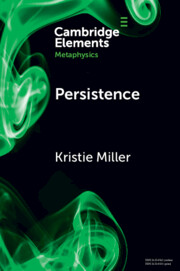Element contents
Persistence
Published online by Cambridge University Press: 01 August 2022
Summary
Keywords
- Type
- Element
- Information
- Series: Elements in MetaphysicsOnline ISBN: 9781009057356Publisher: Cambridge University PressPrint publication: 11 August 2022



